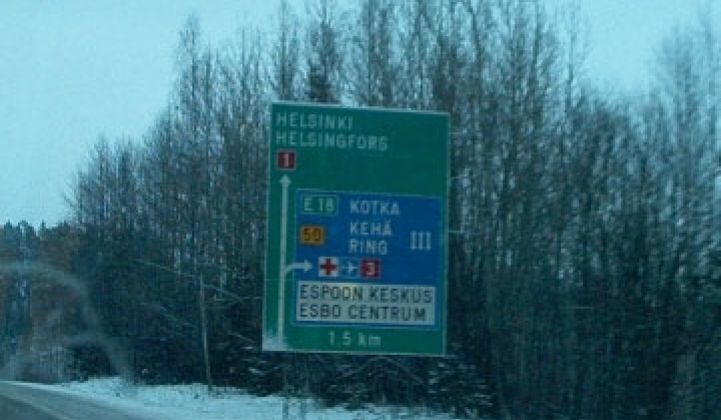If everything works as planned, a new data center going up in Espoo, Finland will reduce atmospheric carbon dioxide by about 7,500 tons a year.
The trick revolves around exploiting the waste heat generated by the servers and storage systems for district heating and cooling, according to Kimmo Pentikainen, director of environmental affairs for Elisa. Elisa will own the data center, which will be built with help from power supply maker Fortum. In ordinary circumstances, the data center would generate 2,000 tons of greenhouse gases a year.
Linking the data center to the district heating and cooling network also effectively provides another revenue stream for the cloud computing provider. And unlike solar or wind, data centers operate independently of the weather, giving waste heat a baseline energy-like profile.
"The supply (of heat) is assured year round with minimal maintenance," he said. Pentikainen will speak at the Nordic Green II conference, which is taking place in Menlo Park, California on April 27 and 28.
Although not yet a massive industry in the U.S., district cooling and heating is a mainstay in Europe. In a nutshell, heat gets captured and injected into water or steam. The water then gets consumed as hot water at industrial sites or in homes or is used to run room heaters. Conversely, the heating exchange process also allows the heat to drive air conditioning systems.
France's Veolia provides district heating services in many locations, mostly the dense urban environments where it works best. Last year, Finland's Helsingen Energia announced plans to build a data center underneath a cathedral and capture the waste heat for the city's district system. IBM and Syracuse University, meanwhile, are erecting an off-grid data center that will exploit the waste heat to run the air conditioners for the server.
Espoo's district heating system largely now relies on fossil fuels, said Pentikainen. Waste heat from the data center will thus be used to displace coal and gas. Additionally, the data center can purchase renewable power (biomass, wind, etc.) from Nord Pool for its own operations, thereby reducing greenhouse gases even further.
Waste heat capture systems are currently largely mechanical, revolving around air compressors and heat exchange systems. A wave of companies -- Alphabet Energy, GMZ Energy, MC10, Photonic Devices, even Silicon Valley warhorse Cypress Semiconductor -- are developing a new generation of more efficient semiconductors that can convert heat directly to electricity.
And make no mistake: we have the heat. The U.S. consumes around 100 quads (100 quadrillion BTUs) of energy a year, and 55 to 60 quads get dissipated as waste heat, according to Arun Majumdar, the UC Berkeley professor who now runs ARPA-E, the advanced projects group inside the Department of Energy. Waste heat, it needs to be noted, is heat that consumers and businesses have paid for in the form of electricity but don't get the benefit from. Indeed, in many cases, consumers have to operate fans and consume even more electricity to get rid of the excess heat.
Besides reducing green gases and recovering lost energy, the heating system in the data center will have other benefits.
"Connecting a property to the district cooling network removes the need for refrigeration equipment and units on roofs and in gardens," said Pentikainen, who continued: "'New' space obviously means new possibilities, which can bring significant savings for the property."
And it's good for the data center, too.
"The heat must be delivered somewhere or the computer racks will heat up too much, which causes malfunction and finally a meltdown of the rack."



